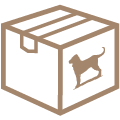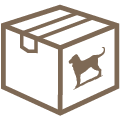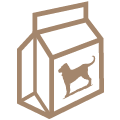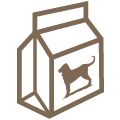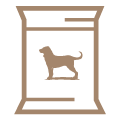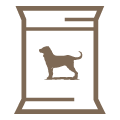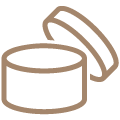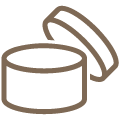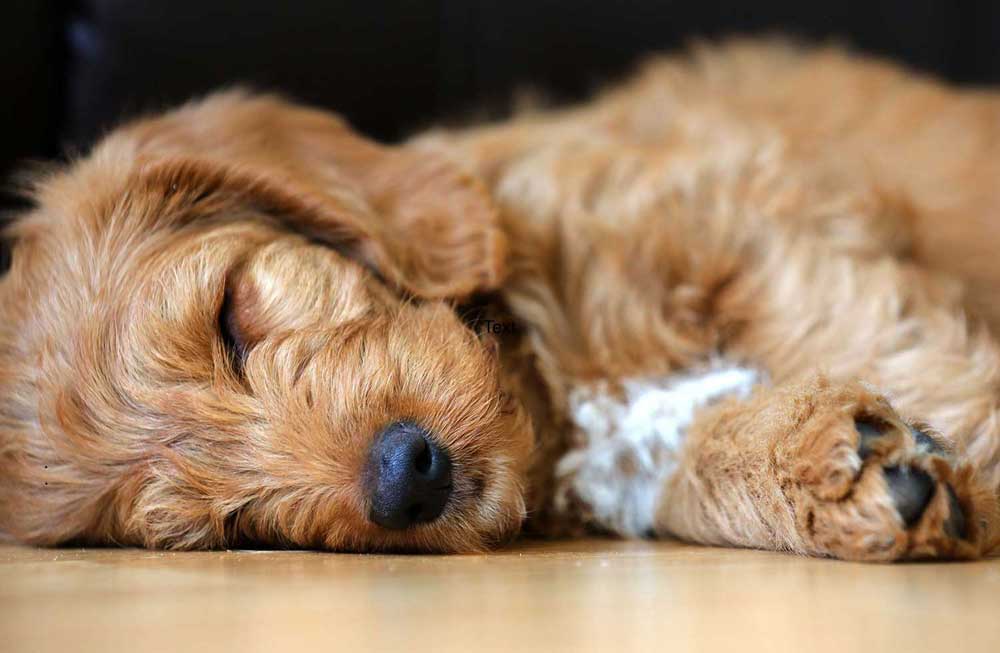Bringing your Puppy Home
The tiny, adorable little bundle of fluff that is going to be your best friend for the next 15 odd years. It’s an important day, and you might be super prepared and ready for anything they throw at you, or maybe you’re just too excited and caught up in the moment to haven’t done much preparation. Either way, there are some important things to remember.
This is general advice, largely taken from personal experience, but hopefully, it will give you some ideas and pointers on your exciting new journey into puppy parenthood.
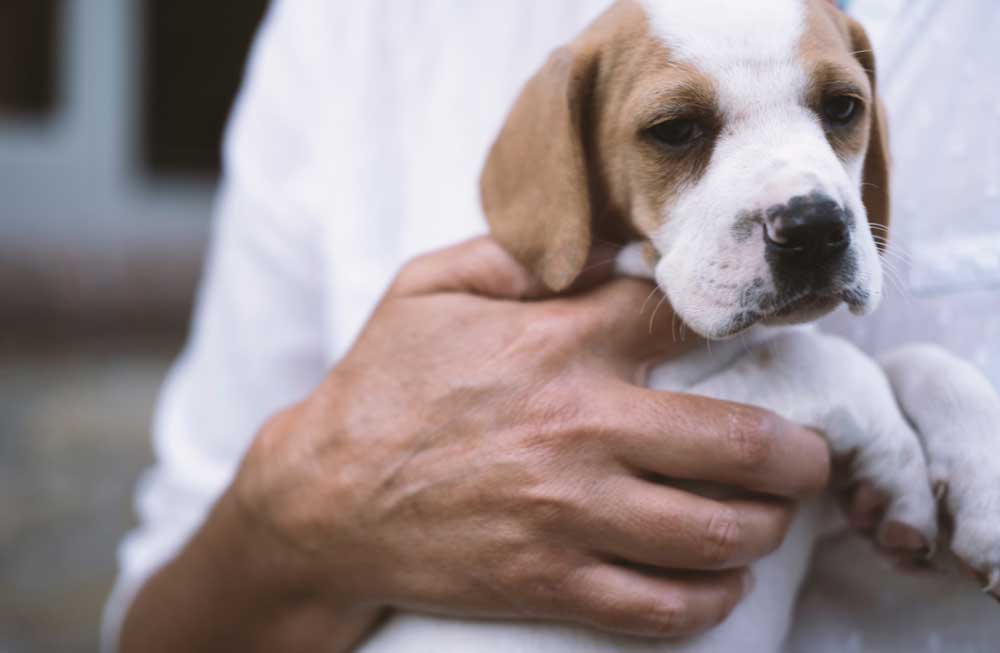
The first and made most important thing to remember is that your puppy is a baby. And they will be for at least the next year. Even when it seems like they’re not anymore. Dogs grow and develop much faster than humans, but they are still wholly dependent on us to meet their every need, forever, but especially in their important growth stages and when we first bring them home. If your puppy is leaving its littermates and mum to join your family, this may well be the most significant day of its life.
Making them feel safe
We all know how keen a dog’s sense of smell is—thought to be 10,000 – 100,000 times more powerful than ours! Bringing a blanket from their new bed and rubbing it on their Mum to get some of her smell on it may help them settle, and bring a little bit of familiarity with them to their new life.
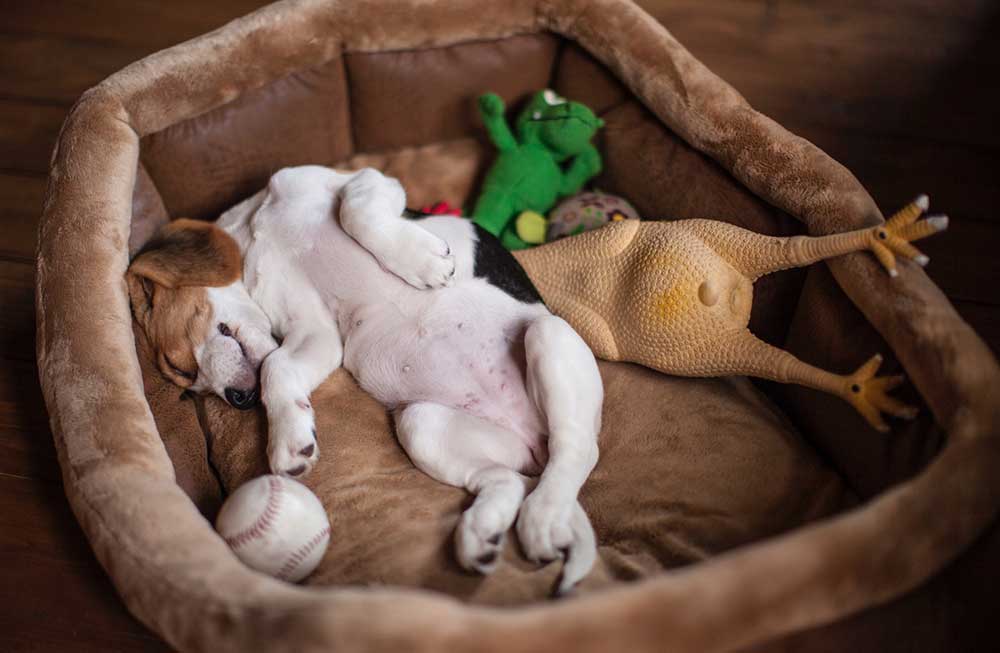
Giving your puppy a comfortable, safe space of its own is important to help your puppy settle into its new home. Make sure you have bought them at least two beds before you pick them up; one for their sleeping area, and one for the living space.
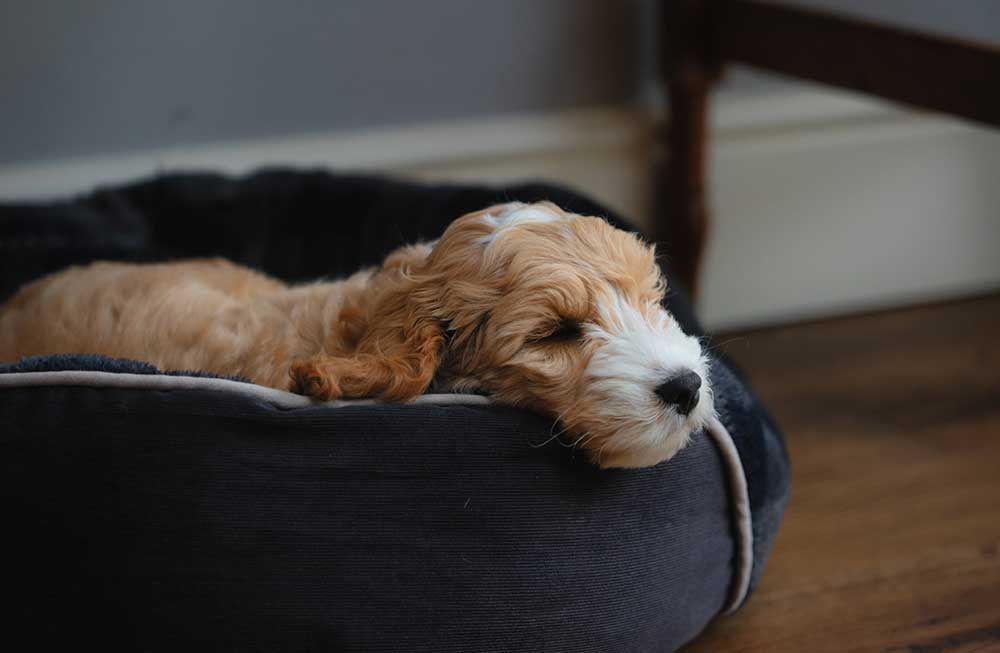
Teaching an “on your bed” command from early days is something I promise you won’t regret. And as tempting as it is to let your puppy curl up in your bed unless you plan on letting them sleep there forever, I would try to fight this urge if you can (do as I say, not as I do—I’ve learned this the hard way, many times over!). But giving your puppy their own space will also help them feel safe and secure, and it is essential to help them to settle at night long term. If you plan on crate training your pup, make sure their crate is cozy and comfy.
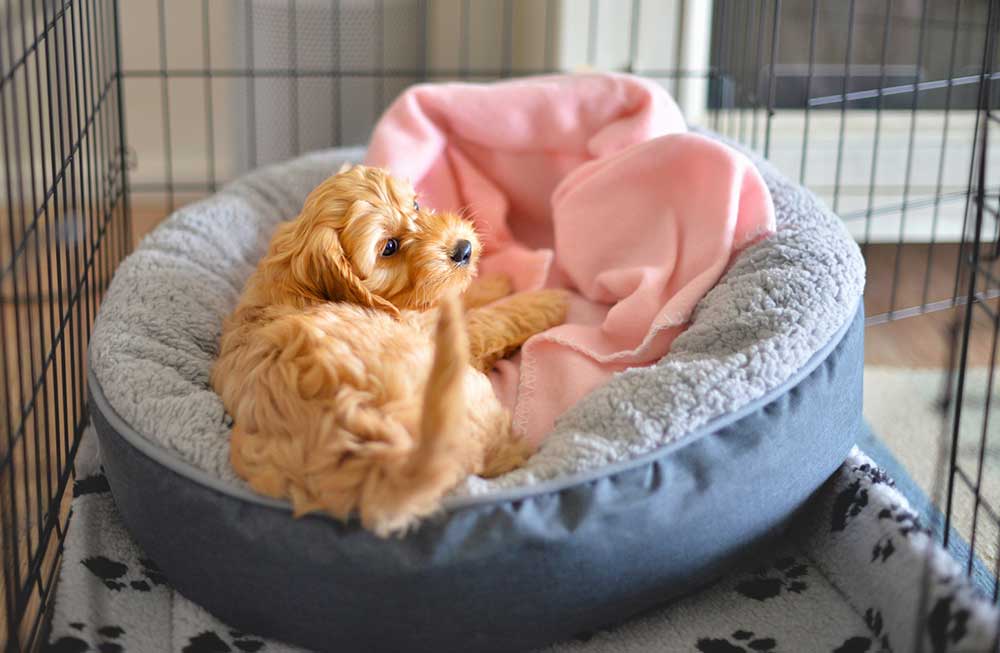
Making time
You are also going to need to clear your schedule. A puppy needs around-the-clock care when they are very young, and you will need to feed them up to four times a day and let them out to the toilet through the night. Babies, remember. Puppies need a huge amount of food for their body size and, because their tummies are so tiny, it needs to be spaced out into lots of small meals. When I brought my 8-week old kelpie home she weighed 4.5 kilos and ate the same amount of food as my 20kg kelpie in a day. It was quite remarkable to see! It’s important that we feed them enough to reach their huge energy needs and increased nutrient requirements, but not so much that they grow at an accelerated rate. We are seeking steady growth, not unnecessarily rapid, and this is especially important for large breed puppies. We also need to make sure they have access to clean water at all times. If they are in a new environment, make sure the water is somewhere they have access to and don’t need to go looking for. We put a bowl of water in our living room until she decided it was fun to tip over.
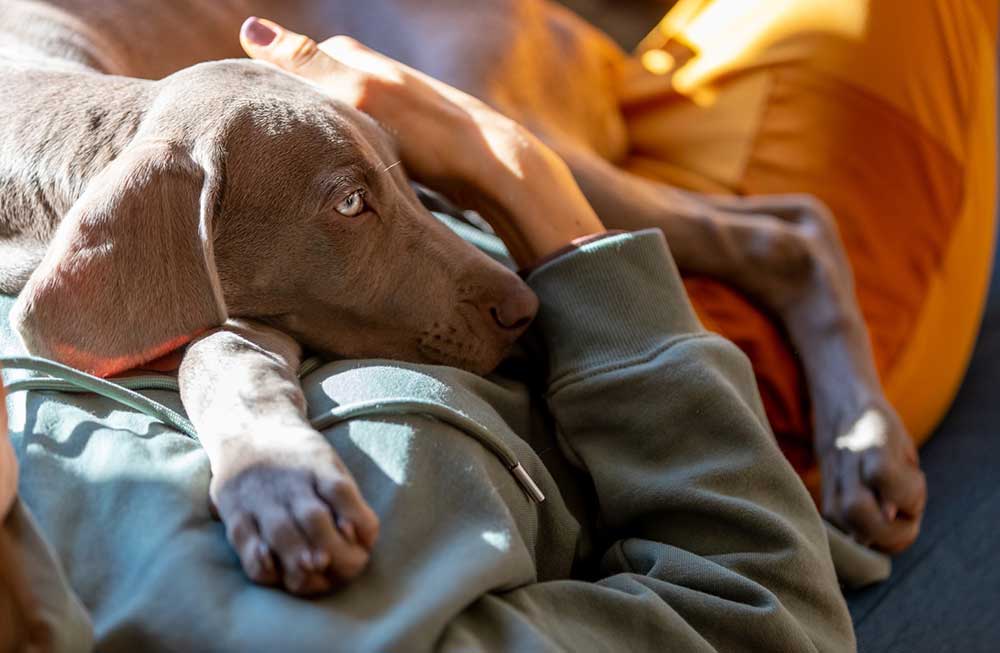
Toilet training
And on the topic of water, there is no time too soon to begin toilet training your puppy. I am personally not a fan of puppy pads, because really they just teach your pup to go inside. An effective (but more labour-intensive) approach is to take your puppy outside at hourly intervals, and after every time they eat or drink anything. A loud clear “toilet” or similar instruction in the area of your garden that you have nominated as their toilet will get them in the habit of going on your command, followed by high praise and treats when they do. Some dogs will get distracted and stop their flow if you congratulate them too early, so you may be better off waiting until they finish to offer praise. Try not to scold your puppy for accidents, and never rub their nose in. They go because they need to, and all you will teach them by doing this is to be afraid of you.
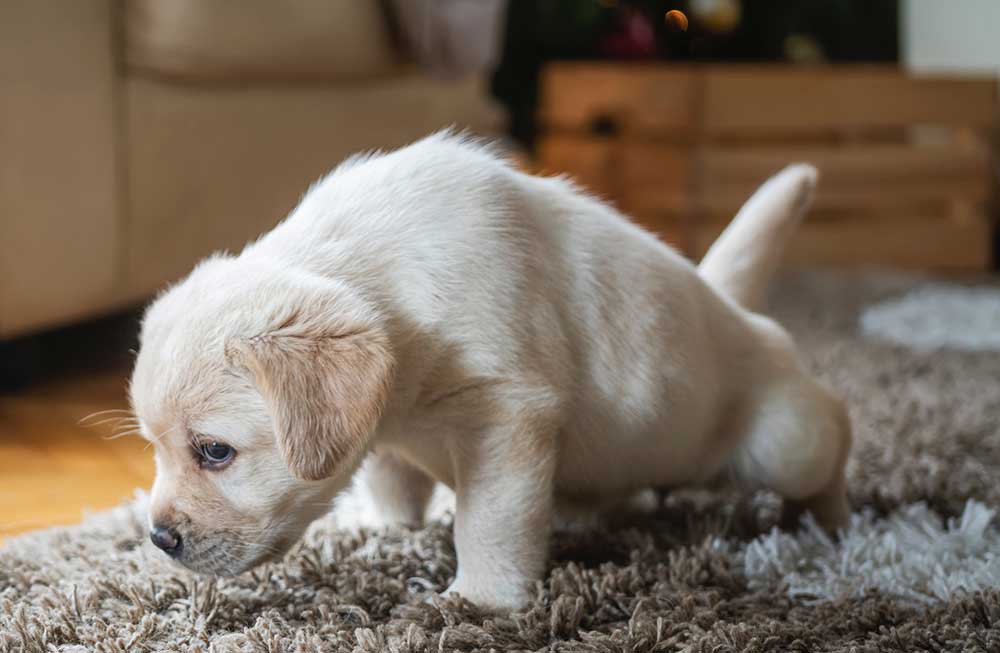
Do puppies need special puppy food?
One of the most important decisions you will make for your new dog’s wellbeing is what you are going to feed them. This can be a really hard decision, which is sort of reasonable given how important it is. It’s especially challenging when you start looking into the available options and come up against an absolute mountain of advice and opinions, many of them contradicting one another. As a nutritionist who advocates for a whole foods diet (for all creatures), it probably comes as no surprise that I recommend selecting a raw or lightly cooked species appropriate food. In the case of dogs, this is a largely animal protein based diet. Meat. My own dogs are both raw fed, and I started my puppy on raw food the day I brought her home at 8 weeks old. You can learn more about raw feeding in this post, and about some of the myths surrounding it here.
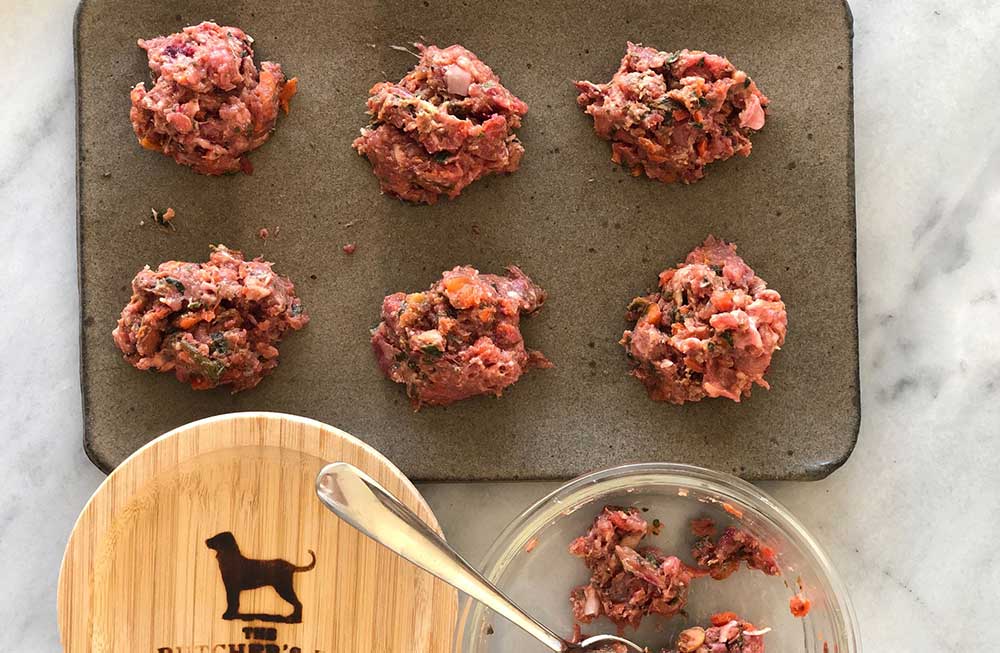
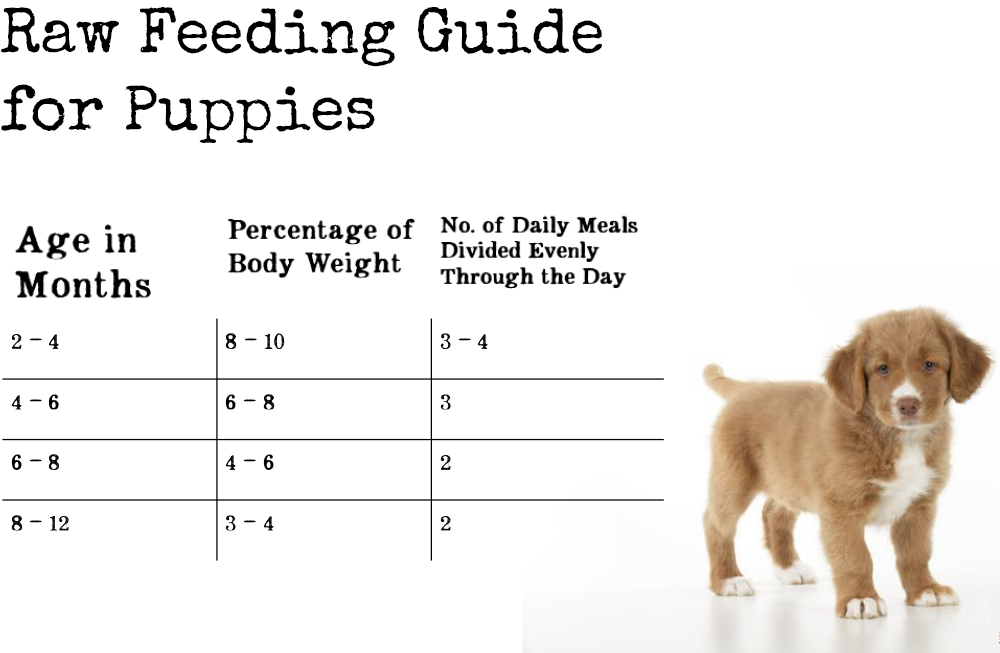
Regardless of what approach you take, it’s important that your puppy eats a food that is formulated and balanced to meet their unique nutritional needs during growth. According to the American Association of Feed Control Officials (AAFCO), which is the body that sets out the nutrition standards for commercial pet food in Australia and much of the world, puppies have increased requirements for energy, protein, fat, calcium, phosphorous, iron, zinc, copper, sodium, manganese, selenium and all of the essential amino acids. This means that, not only will your puppy require a very large amount of food relative to their body weight and compared to an adult dog the same size, but also that this food must be designed to meet these increased nutritional needs. As I mentioned, young puppies need to be fed more frequently than adults—ideally 4 but at least 3 meals per day to begin with. You will need to weigh them at least weekly and update their portions in line with their growth.
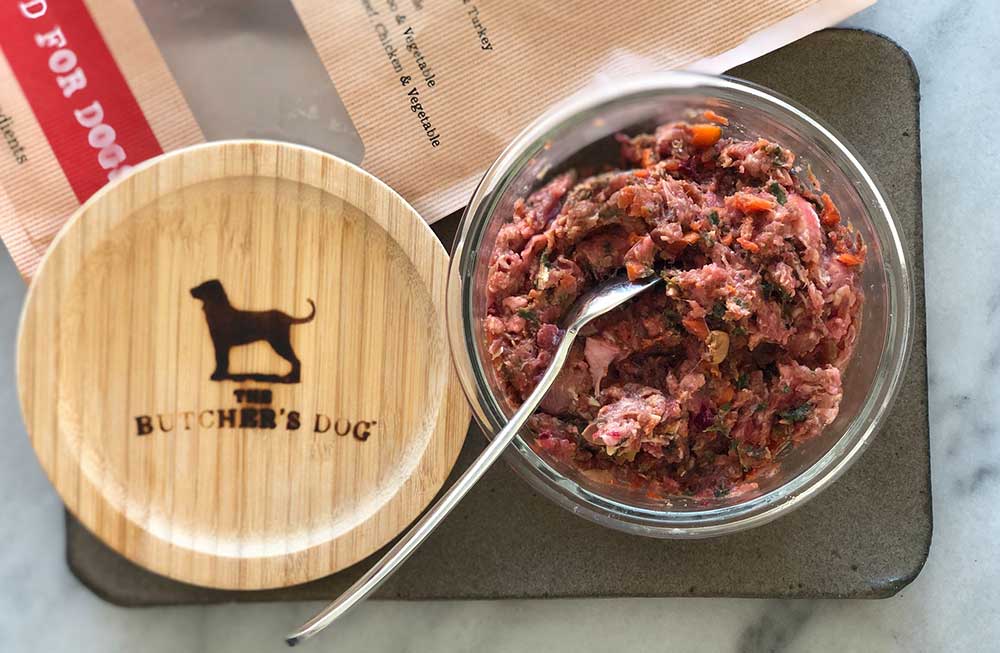
I found my puppy had a series of growth spurts, where suddenly her ribs would be visible and I had to increase her portions significantly almost overnight, and then other periods of comfortably eating the same amount for several weeks. She still has these periods now and she is almost a year old, so it really is a long term task of carefully monitoring their physique, weight, portions and hunger. You may also need to factor treats into their daily food allowance, especially during periods of intense training. Using meals as an enrichment tool (by using puzzle feeders and other tools like this) is a good way to exercise little puppy brains too.
How much exercise does a puppy need?
It can be tempting to clip on your puppies trendy new designer leash and parade them around town all day for everyone to coo over, but it’s important that we don’t do this right away, for a couple of reasons. Puppies should only be exercised for very short periods when they are very young, otherwise it may impede their bone and muscle development. This is especially the case for large breed puppies. A common guide of how long to exercise your puppy for is 5 minutes per month of age, twice a day. This means an 8-week old puppy would go for two ten-minute walks in a day. This doesn’t mean you shouldn’t engage your puppy in other ways for longer periods of time, and it’s important they have plenty of toys and mental stimulation in addition to short walks and active play. But rest is also important, so it’s more about finding the right balance.
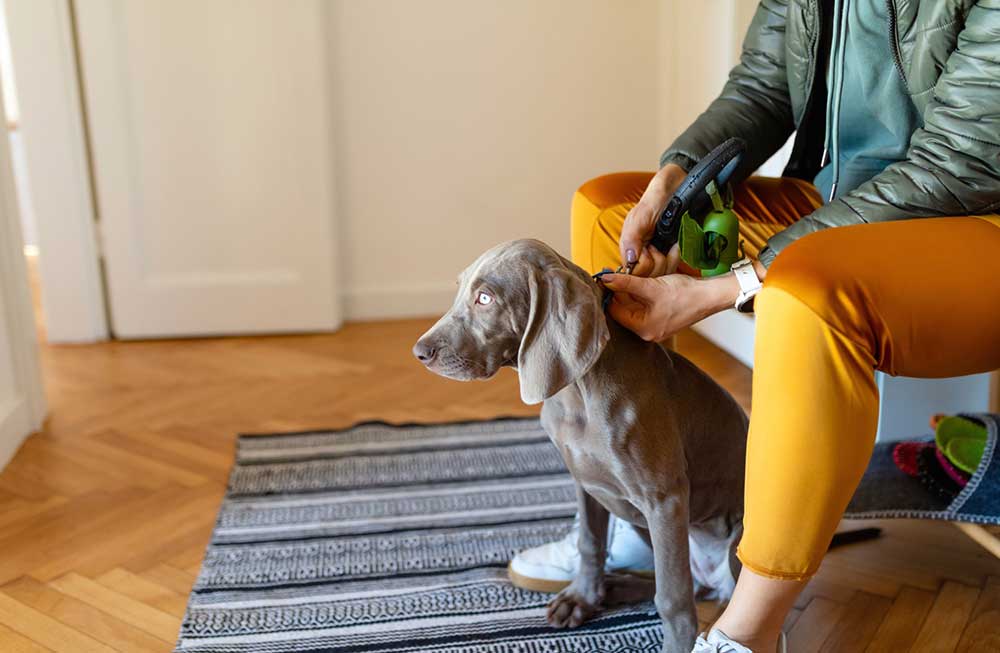
Protecting your puppy
A lot of people also worry about exposing their puppy to potential pathogens like Parvo virus before they are fully vaccinated, which is a very valid concern to have. I’m not a vet so it’s not my place to tell you what approach to take in this situation but, as with everything, I think it’s important to evaluate the situation and work out the best approach for you personally. I engaged the services of a qualified and highly knowledgeable behaviour expert, and weighed up the pros and cons with their advice and that of my vet. It’s true that puppies have an immature immune system and are vulnerable to certain contagious illnesses, some of them life threatening. And it’s also true that 90% of untreated Parvo cases will likely result in death. But 90% of treated Parvo virus cases do not1. And puppies receive a natural immunity to any diseases their mother is fully protected from, via the colostrum they nurse on initially. This is why puppies require multiple vaccines in a short period of time—because the antibodies from their mother can neutralise the vaccine, just as it would the actual virus.
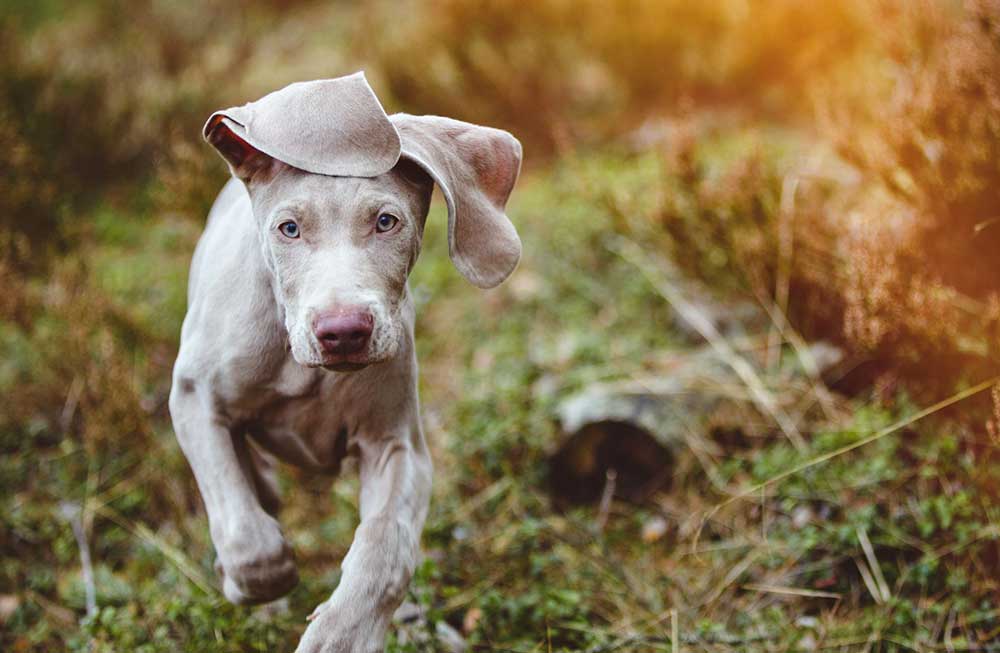
Important developmental stages
The reason there is any debate over whether we should socialise our puppies before they are fully protected via a vaccine schedule, and not just wrap them up in cotton wool in the safety of our home until they’re 16 weeks old, is a little thing called a critical socialisation window. It is thought that this period lasts until your puppy is 14 or maybe 16 weeks old at most, and it is arguably the most important period in their mental and emotional development. Puppies that are well socialised during this period have it imprinted upon their little spongey brains that the world is a safe, happy place to be. After this period, they are more likely to become suspicious and fearful of new and unknown stimuli, which can result in fearful behaviours that may present as anxious, not-confident pets, and sometimes even fear aggression. We don’t want that! We want safely, well socialised puppies that grow into confident and happy dogs. Exposing them to different places, textures and sounds is essential, and it’s perfectly safe to do this in a controlled way and with other dogs you know have been vaccinated.
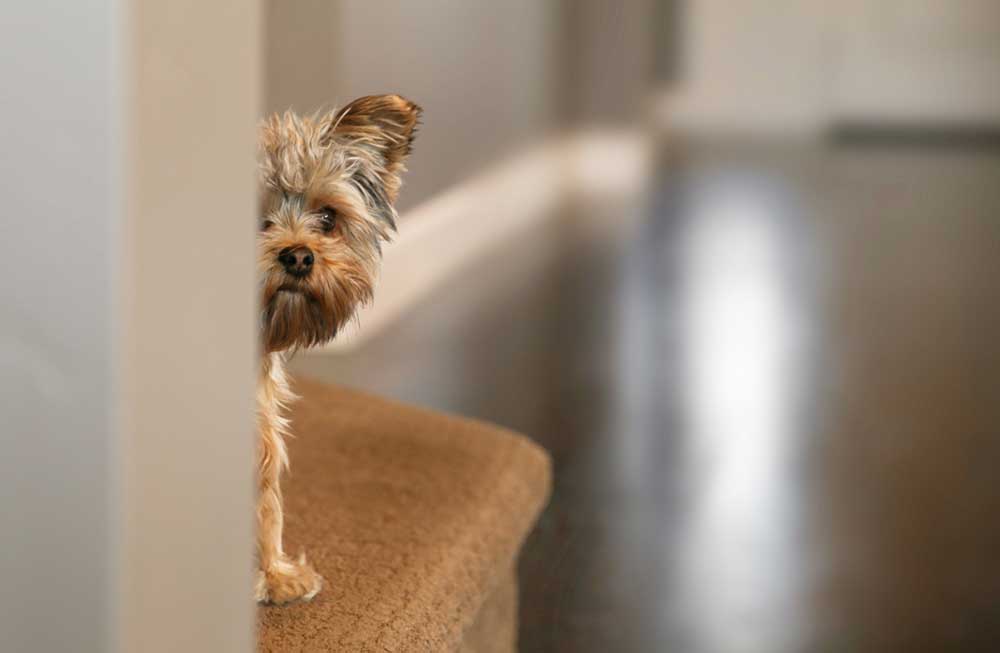
The fear factor and your human kids
Another thing to be mindful of during this key developmental period is the so-called “fear window.” The fear window is a period that is said to be most evident between 8 to around 11 weeks, when your puppy may seem to be afraid of everything (it is actually thought to start around 5 weeks, but your puppy will most likely still be with their mother at this time). It’s important during this period that they ideally don’t experience any traumatic events, as these could leave a life long imprint on your dog. But we want to build confidence, so it’s recommended we don’t reward fearfulness by overly consoling so, again, as with everything, it’s all about finding a balance.
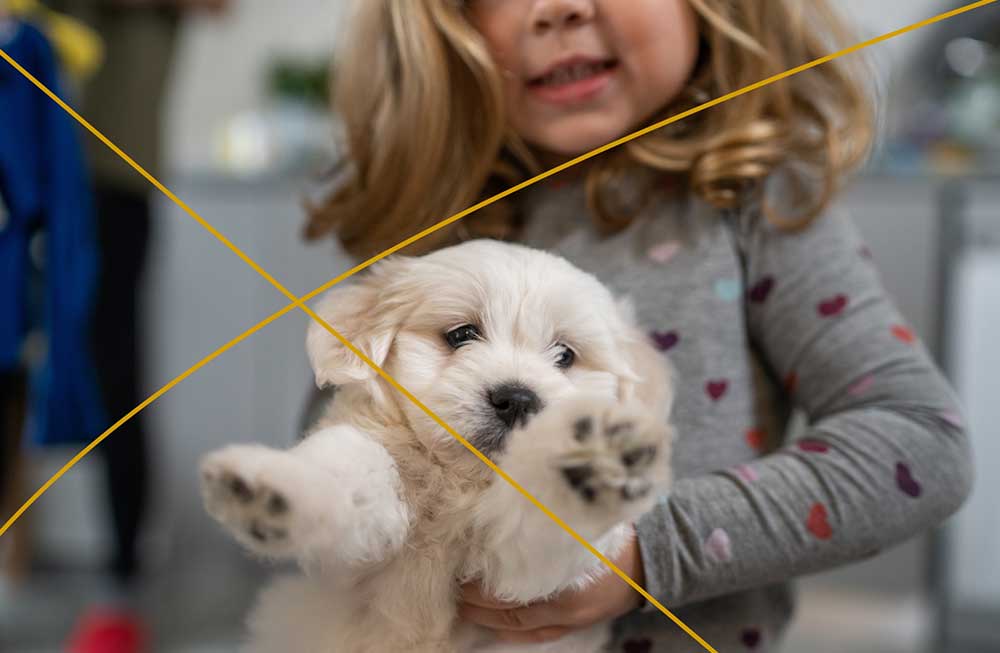
Given that this period usually coincides with bringing your puppy into your home, it’s a good idea to have a plan for introducing your puppy to your human kids. Kids are loud, quick and unpredictable. Puppies are small, quiet and often timid. Some common tips for doing this include:
- Have your children sit quietly and calmly, allowing your puppy approach your kids when they are ready (not the other way around).
- Encourage children to speak softly and only pat the puppy gently, when he or she is comfortable with it.
- Never allow children to poke or chase a puppy, and always let them rest and sleep when they need it.
- No doubt it goes without saying that puppies should never be left alone with young children.
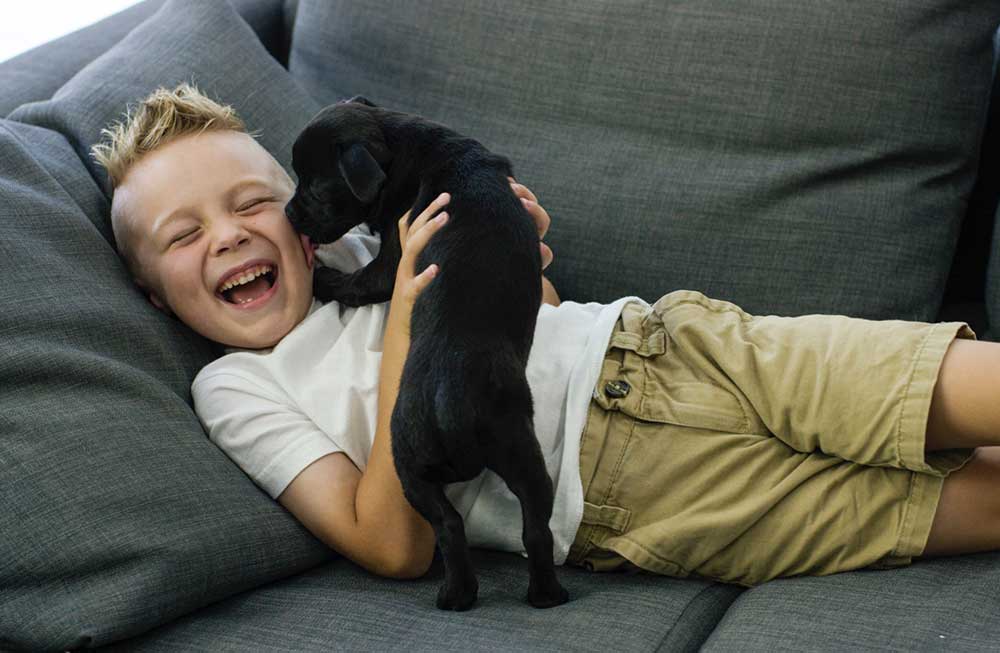
Teething time
After the initial “bringing your puppy home” glow, you may quickly start to encounter some teething issues, pun intended. Puppy biting and mouthing is possibly one of the most challenging behaviours you’ll encounter and, when you Google it shortly after welcoming puppy (as I did), you’ll be horrified to discover that it lasts until they are around 6 months old (as I was). But trying to prevent this behaviour is pointless. Puppies literally discover the world with their mouths. Biting and mouthing is their way of experiencing new things—and everything is new to a puppy.
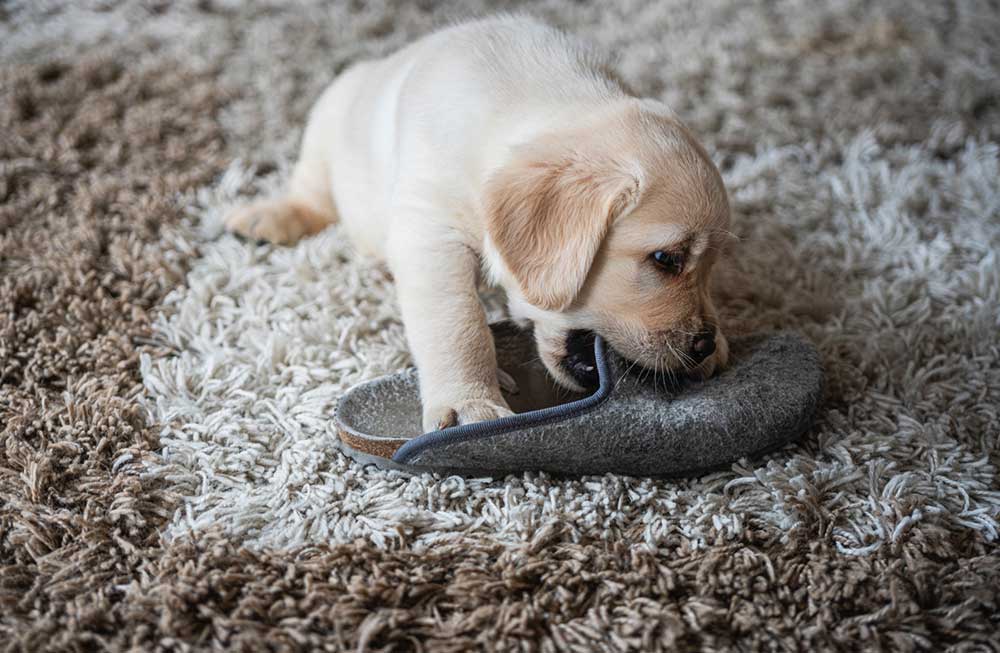
Rather than stamping the behaviour out, we just have to find ways to redirect it to more desirable targets, like toys, teething rings and treats. Giving them little meaty bones will strengthen their jaws and, while this may see counter-intuitive when you’re being bitten day and night, it will also mentally stimulate them, making for calm and content puppies. They can’t bite you when they’re asleep.
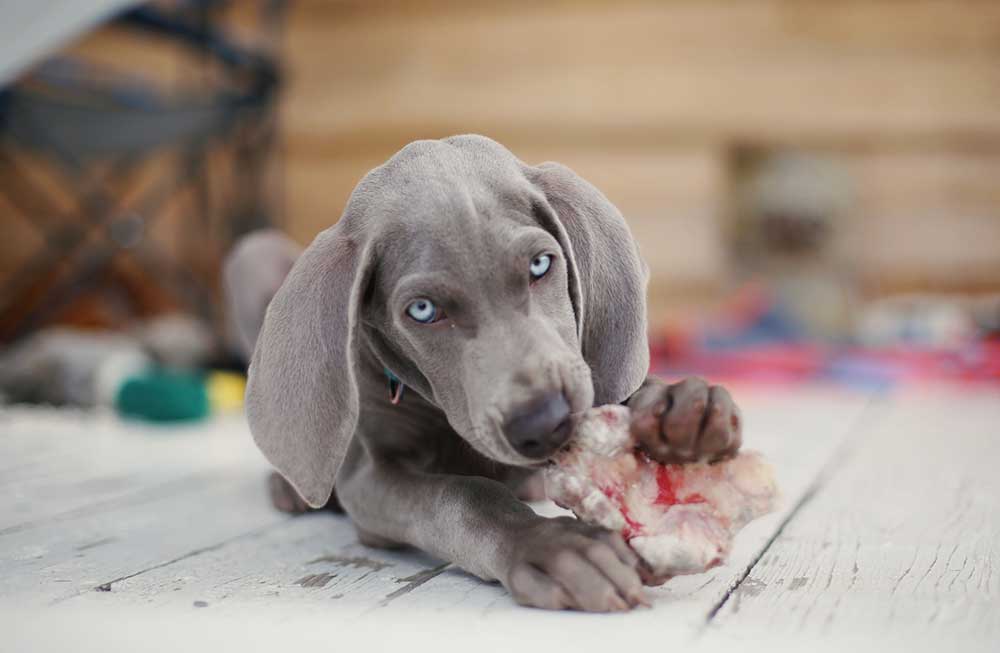
Leaving puppy home alone
As they get older and start to become more independent, it may be time to consider leaving your puppy home alone for periods of time. When we got our puppy, we took week-long shifts of taking her to work, working from home or taking holidays to allow her to settle in and ensure she was never alone for more than an hour or so. This meant we were able to feed her 4 meals a day when she needed them, and she didn’t get distressed by being left alone for long periods. When she was around 12 weeks, we transitioned her to 3 meals a day and started leaving her at home a couple of days a week. I hired a pet sitter to visit each day we were out, feed her her lunch, check on her wellbeing and give her some attention. We also have an older dog, so she was never truly alone. I also made sure she had plenty to do when we weren’t home, and every day she got a kong with interesting foods frozen inside or a wobbler that distributes treats, and access to plenty of toys. This is just what worked for us, and every puppy will be different. I don’t believe it’s appropriate to leave a young puppy alone all day, every day from a young age. If your schedule requires this, a doggy day care may be a good option to keep your puppy safe and engaged while you are out. Again, I think it’s important to find a balance between creating independence and resilience in your dog, and not allowing them to become bored, anxious or lonely. And make sure your puppy always has access to a warm, dry area with a bed and fresh water, that there are no hazards in your garden and they can’t escape.
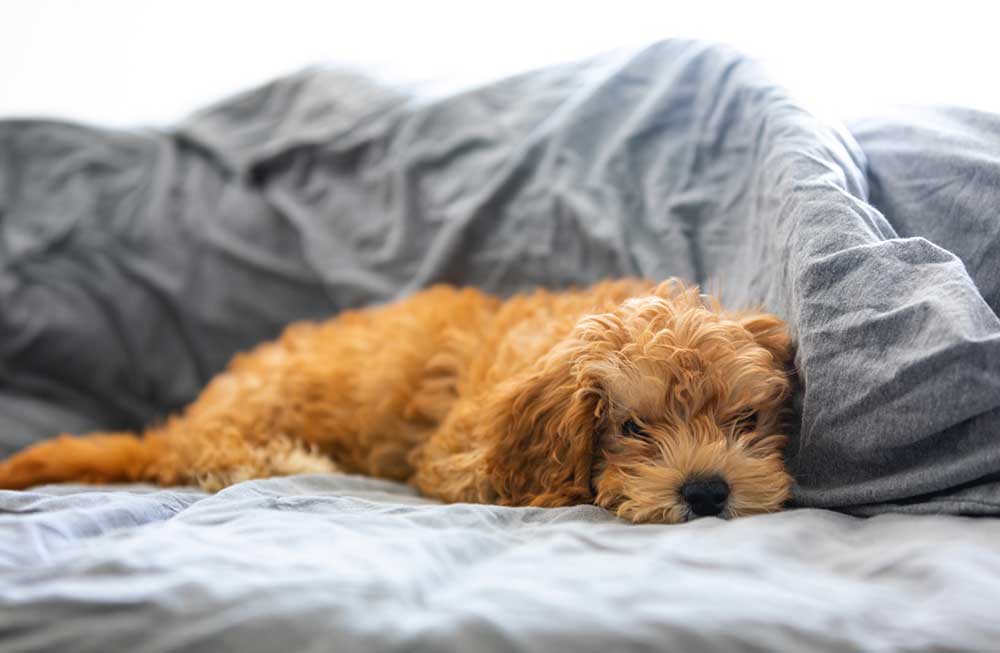
Training time
Teaching your puppy basic and useful commands and habits right from the start is a great way to encourage harmony in your home during what can be quite an intense period, and it is also a fantastic way to mentally engage your pup. It’s a good idea to enrol your puppy in a reputable puppy class for both socialisation and basic obedience training, in addition to training at home. If you find they are a little too cheeky and are exhibiting some unwanted behaviours, look into finding a highly regarded behaviourist or trainer who can give you expert advice to manage them sooner rather than later. A puppy that understands boundaries and what is expected of them is likely to be happier and easier to manage, so don’t be too proud to seek guidance from a professional if you’re finding this is more challenging than you expected. I did and it was a game changer (for both of us!).
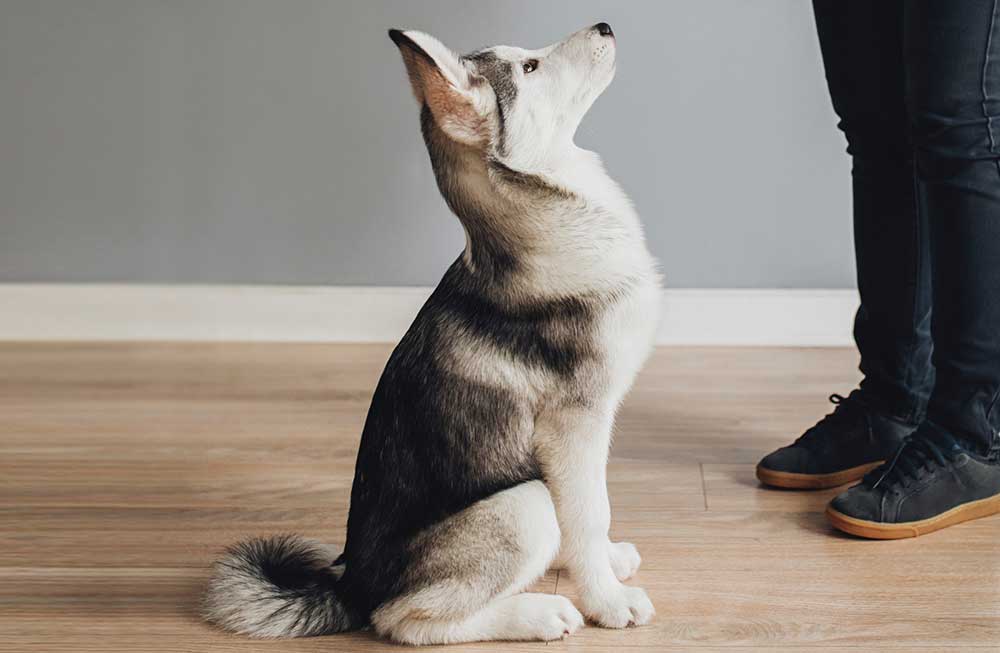
Choosing your vet
You’ll also need a vet. Choosing a vet is an important decision and it can be overwhelming. I think it’s important that you fully trust your vet, but also that they respect your wishes where appropriate. This can be a delicate balance, especially if you choose to go down a more “non-traditional” path with things like a fresh food diet and a more flexible vaccination schedule.
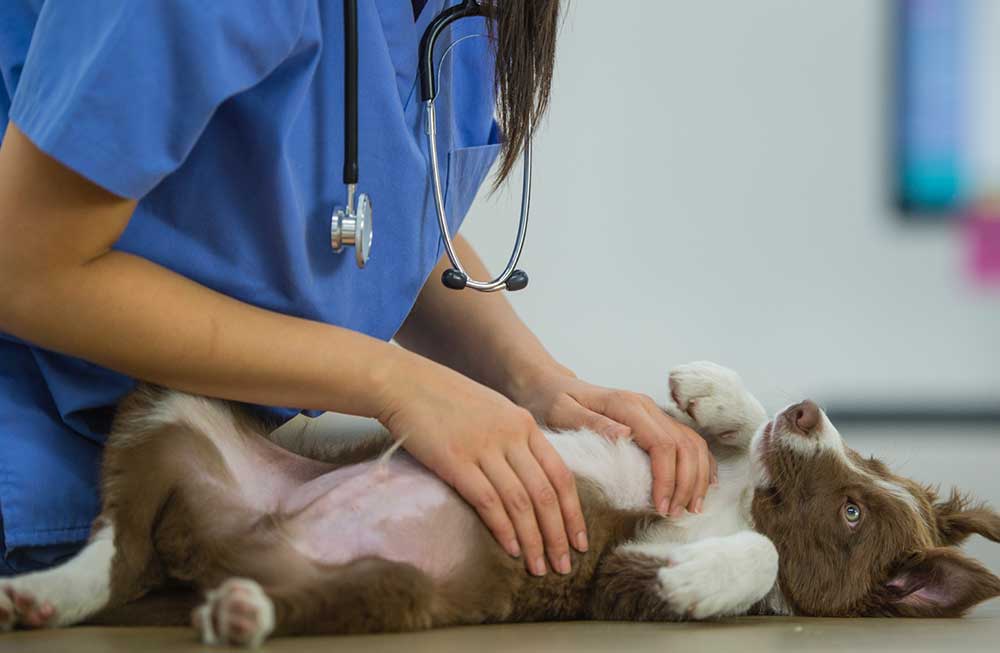
I believe you should always listen to your vet, but that they should also listen to you. Like human GPs, some vets are very traditional, whereas others are more open to “alternative” approaches. Some vets advocate for a processed dry-food diet, do not support a fresh food diet, they advocate for annual vaccine boosters and reach for pharmaceutical intervention as a first point of call for treatment of all ailments. This is well suited to many pet owners and I’m not here to pass any judgement on them, but I do certainly think this approach has its downsides.
If you are a new dog owner and have chosen to feed a fresh diet, it may be quite surprising if your vet advises against it. There are a number of reasons for this that I won’t get into here, but rest assured there are vets who will respect and support your choice to feed a carefully formulated homemade or fresh food diet. These vets are also more likely to support a more flexible vaccine schedule, or even offer titre testing. Titre testing is a method that checks your dog’s protection against the diseases they have been vaccinated against, so you only need to top them up when their immunity has fully waned. Some vaccines are thought to offer protection for up to seven yers, meaning your dog may only need to be vaccinated twice in their life, rather than every single year! Don’t skimp on the worming treatments though, puppies need to be wormed diligently when they’re young.
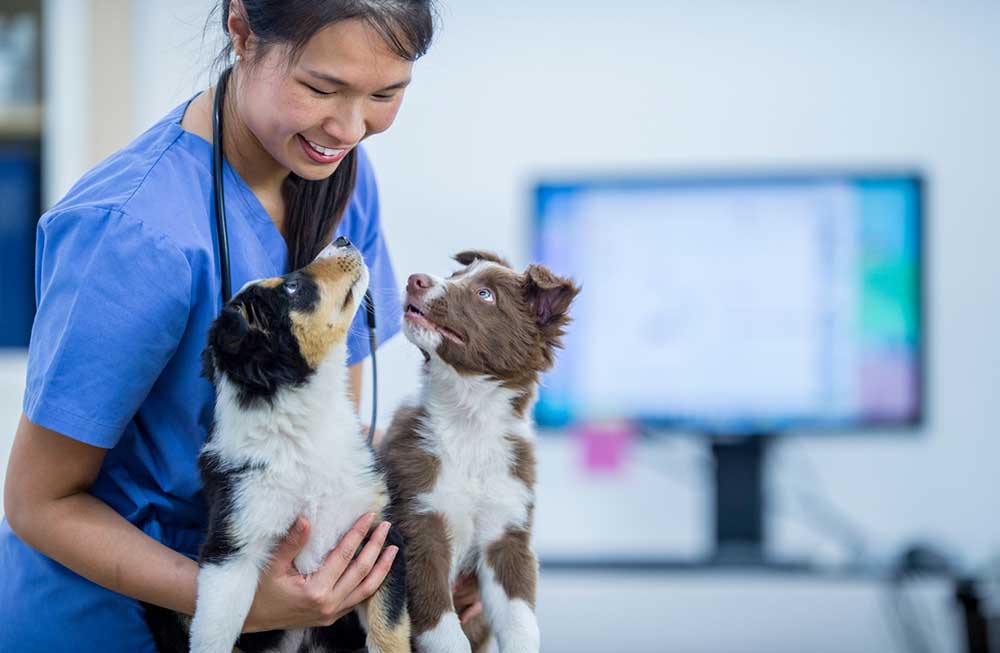
I personally looked into integrative and holistic vets in my area, and selected someone who is focused on treating the underlying cause of any ailments, rather than medicating the symptoms. I know my vet listens to me and respects my wishes when it comes to my dogs’ healthcare, and as a result I trust her fully when she makes recommendations regarding it. Vets have an incredibly hard job, so you whichever path you choose, always be respectful and kind to your pet’s healthcare provider.
I hope some of these tips have been helpful to guide you through the many responsibilities and decisions involved in bringing a new puppy into your home. Try not to get overwhelmed and take plenty of time to breathe in that puppy smell before it’s gone forever.




